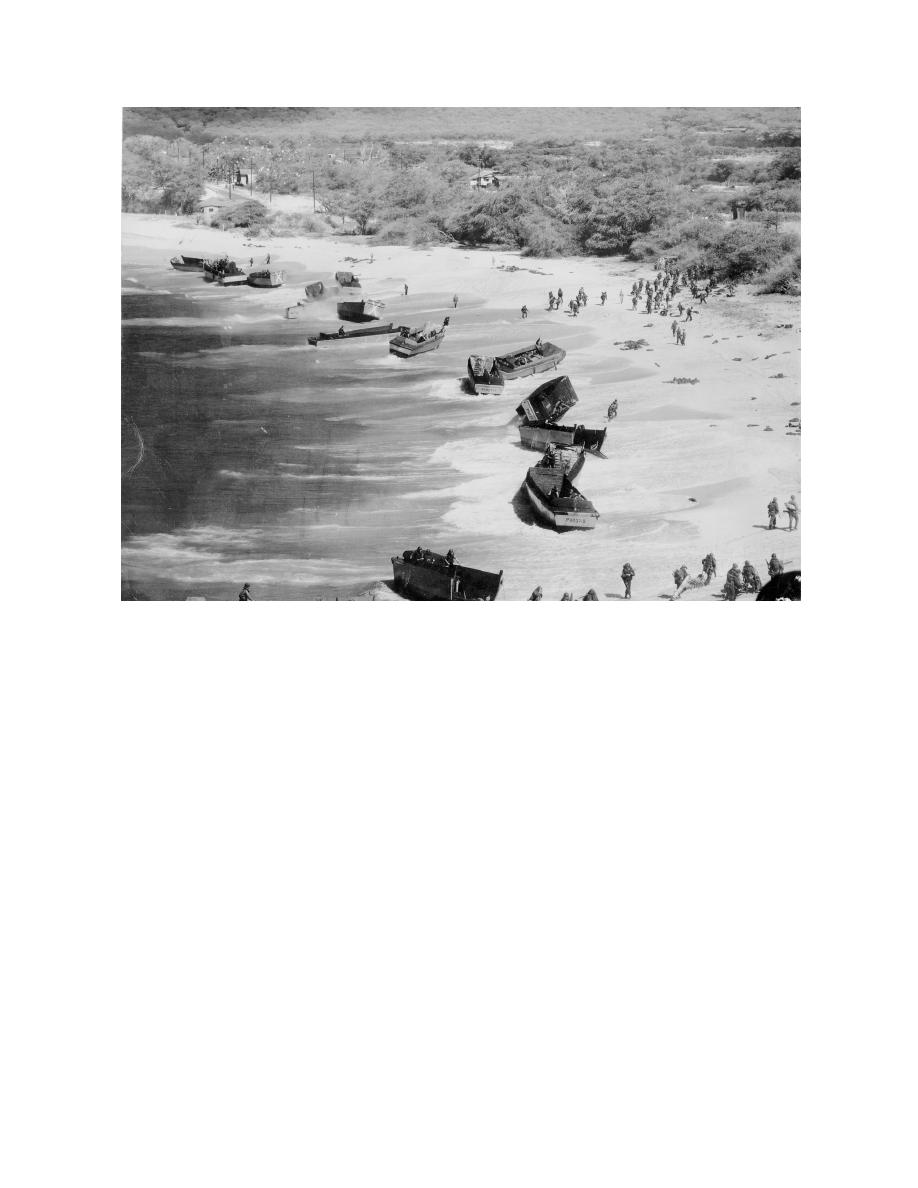
EM 1110-2-1100 (Part I)
30 Apr 02
Figure I-3-15. Operation MIKI, Waianae, Oahu, HI, October 1949, (Many landing craft broached and were
shoved onto the beach by surging breakers) (from Wiegel and Kimberly 1949)
(1) Vung Ro. For the construction of the port of Vung Ro to support the major air base at Tuy Hoa,
estimates of typhoon and monsoon waves were made and wave refraction studies used to plan the port.
Port development included landing-craft ramps, a floating pontoon cube barge dock, two DeLong barge
piers (183 x 24.4-meters) (600 x 80-feet) with two girder spans off a 120-meter (394-foot) rock fill causeway,
tanker mooring facilities and a pipeline connecting to the tank farm south of Tuy Hoa airstrip about 15.5 km
(9.6 miles) distance. Seven months after the port was completed the facilities were struck by a typhoon, but
survived wave conditions exceeding the design wave criteria (Wiegel 1999).
(2) Da Rang River. The U.S. Air Force wanted a harbor closer to the air base that would be located at
the mouth of the Da Rang River. The river brings a great amount of sand to the coast in this area. The
USACE had recommended, based on studies by CERC and WES, a site several miles south where the 3-
fathom line was much closer to shore. The Navy had funded hydraulic model studies of the entrance and
jetties at the southern site. However, the Air Force pressed on at the river mouth site with a "turnkey project"
contractor. After several months of pilot channel dredging, the contractor conceded that construction of a
harbor at the Da Rang River mouth was impractical and the project was abandoned (Wiegel 1999).
f. Temporary wharfs. The Army has two sizes of self-elevating pier systems, known as DeLong
barges. These units are honeycomb-like, welded-steel, box-girder structures consisting of plates and
stiffeners that are towed to a site where a temporary harbor is being built or an existing port rehabilitated.
The units are anchored on pneumatic caissons that are forced into the sea bed with air jacks. The units can
I-3-26
History of Coastal Engineering


 Previous Page
Previous Page
